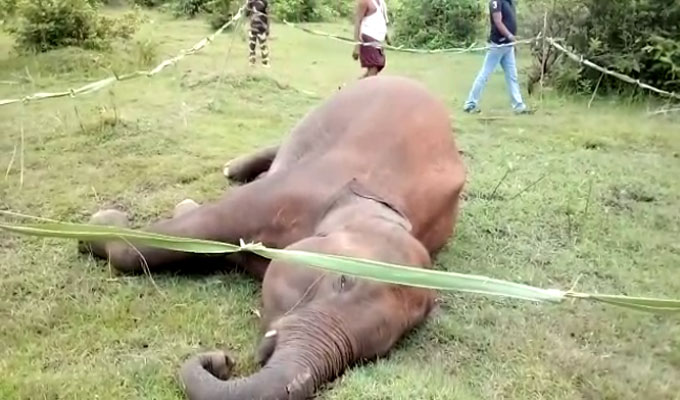Bhubaneswar: As many as 1,356 elephants have died due to various reasons in Odisha since 2000-01. While only 20 elephant deaths were reported in 2000-01, the death toll reached 77 in 2020-21. And this financial year, at least 42 jumbo deaths were reported till October.
According to data provided by the office of the chief wildlife warden of Odisha in response to a RTI query, the highest number of elephant deaths (93) took place in 2018-19, followed by 86 in 2015-16 and 83 in 2010-11. Similarly, 82 jumbos died in 2012-13 and also in 2019-20.
As many as 136 pachyderms were killed by poachers, 19 due to poisoning, 33 were hit by trains, six died in road mishaps and 204 died in other accidents. As many as 206 jumbos died due to electrocution, of which 106 were killed deliberately while 34 elephants died of natural causes.
The wildlife office doesn’t know the reason for the deaths of another 176 elephants as the cases were reported after the carcasses had putrefied. The rest succumbed to infections — 51 died of anthrax, seven of herpes and 334 of other diseases.
The eastern state had 1,976 elephants, according to the last census conducted in 2017. There were 1930 jumbos in the state in 2012, which increased to 1954 in 2015.
Informing about the steps taken for conservation of the elephants, the chief wildlife warden’s office said the government has notified the Mayurbhanja, Sambalpur and Mahanadi elephant conservation projects to check the deaths of the jumbos.
The state has also selected 14 traditional elephant corridors for smooth movement of the pachyderms. The government has dug ponds, developed meadows and made provisions for salt licks in various animal habitats and traditional elephant corridors, it said.
Coordination meetings with the officials of the energy department and railways are being held frequently and preventive measures are being taken to prevent the deaths of elephants due to electrocution and from being hit by trains, informed the office.
Anti poaching and anti-smuggling staff have been deployed in strategic places to prevent the poaching of elephants. Trackers have been deployed to keep a strict vigil on the elephant habitats and their movements. Besides, elephant proof trenches have been dug to prevent the movement of the animals towards human habitations.
Jitasatru Mohanty, a former conservator of forests, said: “There is a lot of work needed to be done to reduce elephant deaths due to electrocution and train hits. The electricity lines should either be undergrounded or the height should be increased to such a level that elephants will not come across the live wires.”
Proper coordination among the field-level forest and railway officials is needed to prevent elephant-train collision cases, he suggested.
Continuous awareness programmes should also be undertaken for the people who are staying near elephant movement areas so that the man-elephant conflict can be reduced, the expert said.
IANS
